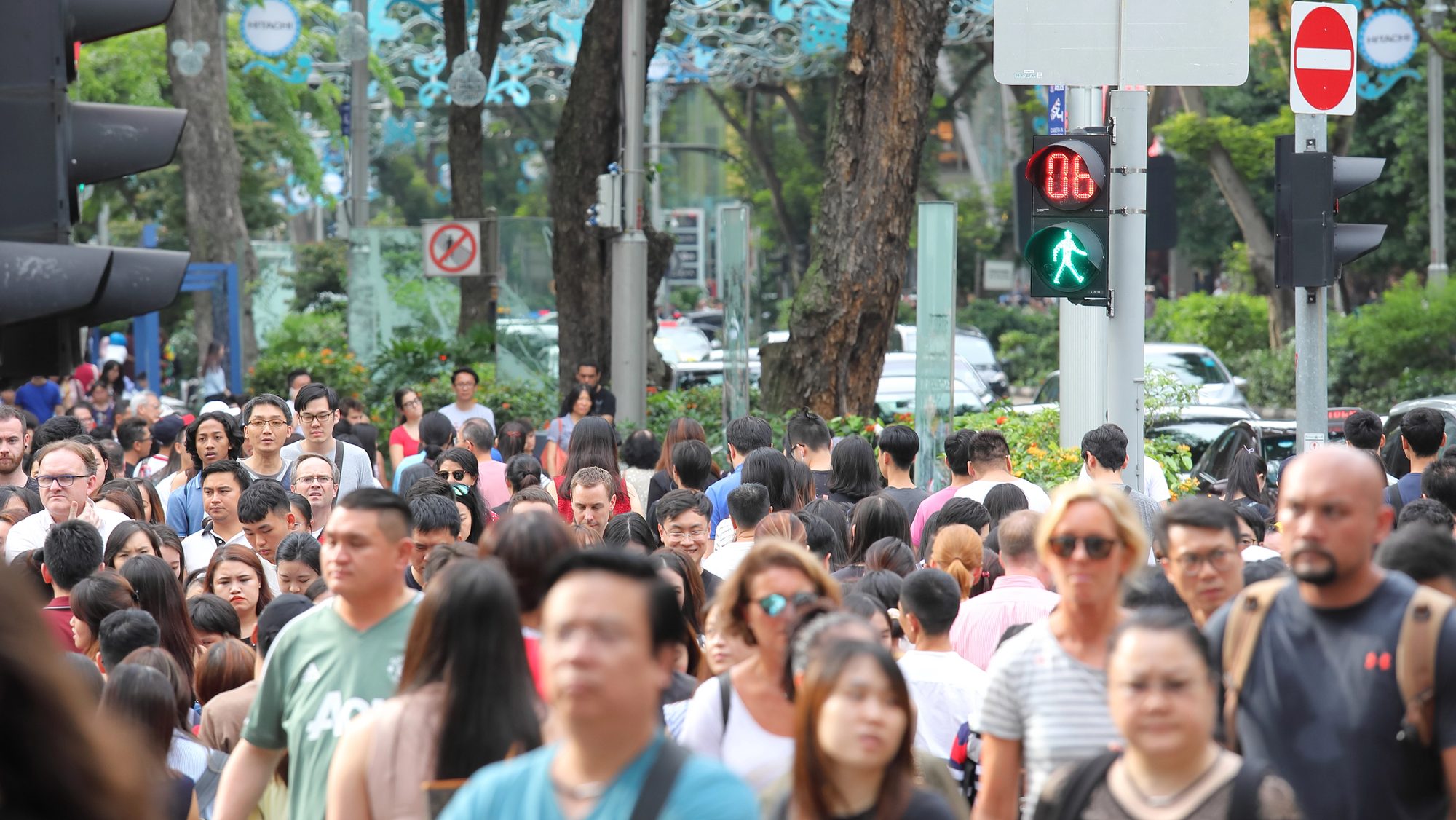SINGAPORE: Crowds in Singapore have become a growing concern for many locals, with one Singaporean remarking online, “So I wasn’t imagining it when I felt that crowds are becoming more and more unbearable.”
This comment came after it was revealed on Tuesday, Sept 24, that Singapore’s population has surpassed six million for the first time, hitting 6.04 million as of June 2024. The increase is mainly due to growth in the non-resident population.
The figures were published in the annual Population in Brief report by the National Population and Talent Division (NPTD) of the Prime Minister’s Office, along with partner agencies.
According to the report, Singapore’s population rose by 2 per cent from last year. Of the total population, 4.18 million are residents, while the remaining 1.86 million are non-residents.
Channel News Asia reported that the non-resident population grew by 5 per cent compared to last year. This includes foreign workers, domestic helpers, dependents, and international students.
The biggest increase came from work permit holders, who comprise 44 per cent of the non-resident population, followed by migrant domestic workers at 15 per cent.
The increase in non-residents has been particularly significant in the construction, marine, shipyard and process (CMP) sectors, where companies have been catching up on projects delayed by the COVID-19 pandemic.
The report noted that the foreign workforce plays an essential role in supporting Singapore’s economic needs, allowing businesses to access a wider range of skills from around the world.
The report also stated that the non-resident population is diverse and that its size and composition “fluctuate” based on the country’s economic and social needs.
Singaporeans had mixed reactions to the news. Some were unsurprised, with one resident commenting, “Every year is a new historic high.”
Others pointed out that with every population increase, the cost of living also seems to rise, with housing prices, Certificates of Entitlement (COE), and even basic food items like kopi O and cai png becoming more expensive.
Meanwhile, another commenter said, “If there are no foreigners, I wonder if local people want construction jobs to build BTO? Do local people want to work at Jurong inland? Do locals want to be maids/domestic workers? Do local people want to work on the roadside under the hot sun?
Do local people want to serve and get scolded at the hospital? Local? Local?”
Despite these worries, the government has reiterated that the population is not expected to exceed 6.9 million by 2030. According to NPTD, Singapore’s total population could be between 6.5 million and 6.9 million by 2030.
The 6.9 million figure, first mentioned in a 2013 Population White Paper, was a planning parameter, not a target.
During last year’s Committee of Supply debate, the Minister in the Prime Minister’s Office, Indranee Rajah, addressed the importance of planning for future population growth.
She said the government considers various factors, including birth rates, life expectancy, migration, and economic needs, when developing population plans.
As a result, the government avoids planning based on a single population figure but prepares for multiple possible outcomes by developing various scenarios to test different assumptions.
NPTD said on Tuesday that the 6.9 million planning parameter remains applicable for the 2030s based on these scenarios.
According to the Ministry of Manpower’s (MOM) latest quarterly labour market report, released on Sept 17, the resident labour force participation rate stood at 68.6 per cent for those aged 15 and above, putting Singapore ahead of most countries in the Organisation for Economic Co-operation and Development (OECD).
The Ministry of Manpower’s (MOM) latest report, published on 17 Sept, showed that Singapore’s resident labour force participation rate is 68.6 per cent for those aged 15 and over, ranking higher than all but four Organisation for Economic Co-operation and Development (OECD) countries: Iceland, Netherlands, New Zealand, and Switzerland.
The unemployment rate for residents and citizens also improved, with an overall rate of 2.0 per cent. The rates were 2.7 per cent for residents and 2.8 per cent for citizens. Meanwhile, long-term unemployment remained low at 0.8 per cent. /TISG
Featured image by Depositphotos (for illustration purposes only)

